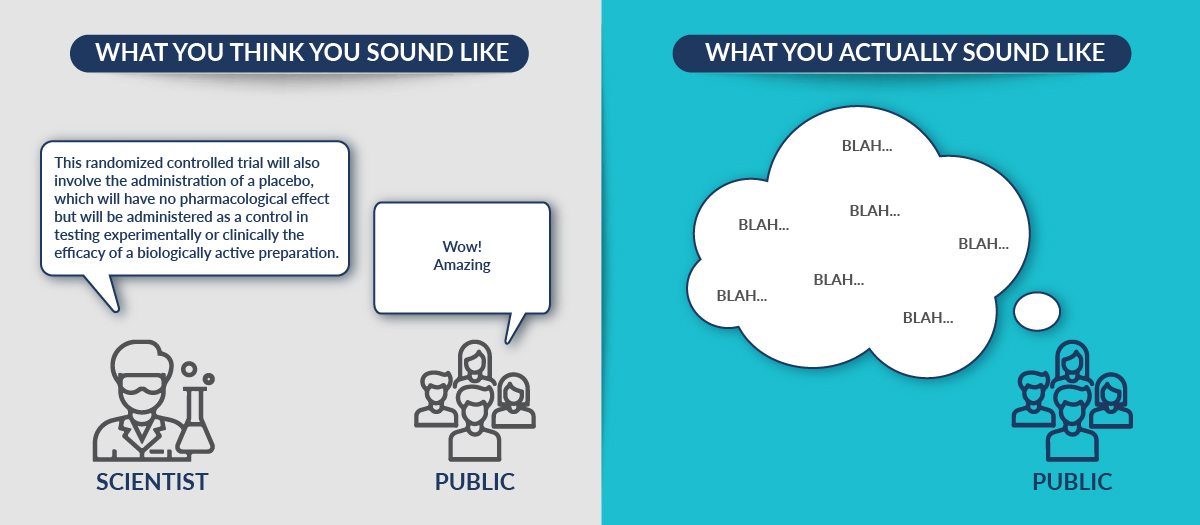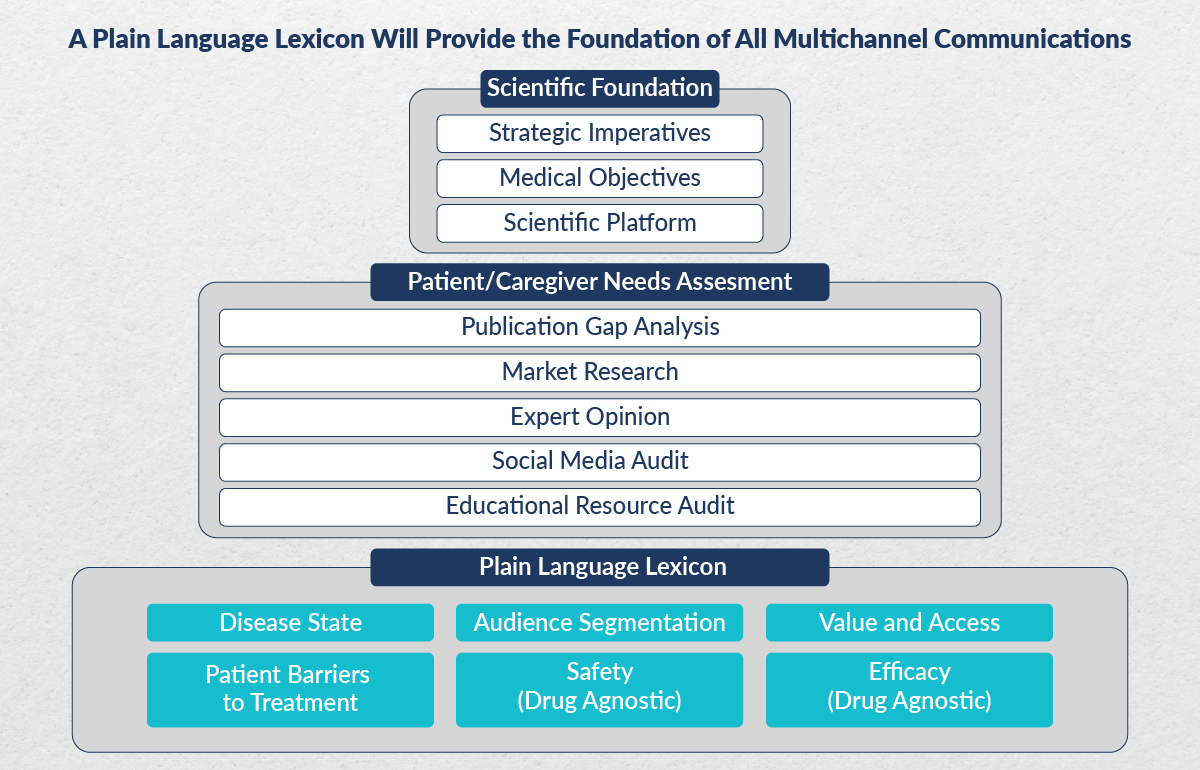Patient lexicons and plain language writing have been a staple of the pharma industry since at least 2010. In theory, the Plain Writing Act of 2010 created a general guide for industries to communicate with consumers more clearly and effectively. In practice, it provided some nuts and bolts-type advice but failed to address the intricacies and specific nuances of the pharma industry. Enter the Centers for Disease Control and Prevention (CDC) and health literacy. Health literacy was initially designed to increase reader understanding by associating medical or health information with reading grade level. In 2021, the CDC updated its health literacy guidelines to incorporate the concept of patient actions related to understanding, with an emphasis on:
- The ability to use health information, rather than just understand it
- The ability to make “well-informed” decisions
Patient lexicons take the strengths of plain language (increased understanding) and health literacy (actionable understanding) and apply them to specific patient populations. These lexicons can be used to create comprehensive and consistent terms so that patients can easily understand and process health information relevant to them. Lexicons also create a connection between medical professionals and patients, increasing trust and enhancing opportunities to improve patient health outcomes.
The current disconnect
Patient lexicons do currently exist. Both the CDC and academic institutions such as the University of Michigan provide glossaries of plain language terms. The issue is that these terms don’t align. For example, the CDC defines an “intervention” as an action, treatment, or program. The University of Michigan calls it “care.” Worse, when medical professionals speak with patients, they tend to fall back on familiar jargon that can sound like a foreign language to patients, leading to errors, lack of comprehension, and uncertainty.

Ideally, a patient lexicon would be relevant and easily understood by a wide range of stakeholders, including healthcare providers (HCPs), patients, professional associations, industry, and patient advocacy organizations.
How to create a useful patient lexicon: Ask!
A collaborative, co-creation approach to developing a patient lexicon will help ensure that the end product delivers on its purpose. Start with the basics:
- Do patients know what a lexicon is?
- Are there terms that patients may find offensive?
- How are medical terms understood?
- Does the reader understand the communication right away?
- Are there other formats that may work (infographics, etc.) to make it clearer?
Overall, creating a patient lexicon should align with the goals of plain language: make it easier for patients to understand health information, and create universal ways to express ideas that remove barriers between patients and HCPs. In fact, research shows that pharma companies that succeed in true patient engagement have a better chance of regulatory and commercial success. Finding ways to deliver patient-friendly communications throughout the drug development lifecycle is key—and finding a common language to develop those communications in is essential.
How can Medical Affairs collaborate with clinical and commercial to improve patient lexicons?
Communication is, and will remain, critical to healthcare in all areas. The number of patients proactively participating in their healthcare continues to trend up. This means patients are becoming more aware, educated, and involved than ever before. A 2020 consumer survey showed that 72% of respondents feel they understand their health and well-being needs and work actively with their doctors to set goals. More than 50% said they are comfortable telling their doctors they disagree with them. Patient use of technology via healthcare tools, data, and tracking, as well as virtual visits, is up. In parallel, more patients are willing to share their data, opening the door to more informed conversations with HCPs and indicating an increased level of trust and comfort.
This environment creates an unparalleled opportunity to create a patient-centered experience via universal language that incorporates insights from a variety of stakeholders. Medical Affairs can help lead by considering the following:
Patient opinion mining and sentiment analysis in healthcare:
- Collaborate with patient support groups, patient advocates, contract research organizations (CROs), etc. to develop language
- Conduct online surveys; track social media comments and hits/likes, online reviews, viral/popular content/themes/topics, etc. to inform language inputs
- Be consensual but analytic (a disciplined transparent process)
- Involve actual implementers (providers) and users (patients) to assess real-world functionality
- Specify acceptable variations on the required pattern—not a rigid prescription
- Patients and families are considered part of the team with specific roles; be amenable to gathering an expanding circle of contributors
- Build a practice and training team tailored to the needs of each patient and situation, and in general for specific patient populations
Integrate, create, practice, review:
- Incorporate formal user testing into your protocol; participants should have a range of health literacy and academic backgrounds
- Seek insights on readability, usefulness, and purpose with regard to the intended audience
- Refine content, and repeat the process until 90% of participants can find the information you’re asking them about, and are able to understand/act on it
Conclusion
Inventing and implementing a common patient lexicon for use with all stakeholders across the drug development lifecycle is an important step towards a more patient-centric healthcare approach. Plain language lexicons form the foundation for all communication channels, which is why it’s essential to get it right.

Cactus Life Sciences has a range of expertise in patient-focused solutions that further scientific understanding at every touchpoint. From patient journey mapping to Medical Affairs portals, infographics, and blogs, we deliver compelling content that drives action. To explore more about the types of engagements we can offer, contact us today.
About the author

Laura Perry
Laura Perry is Vice President, Marketing, at Cactus Life Sciences.












